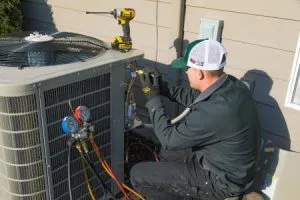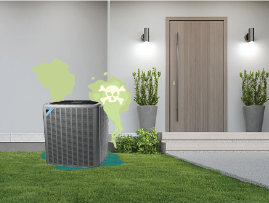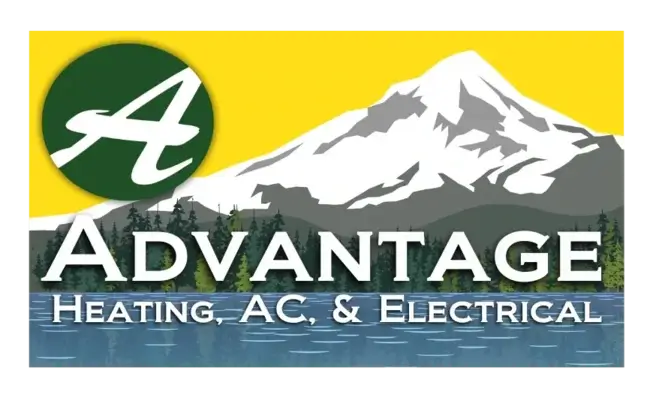EPA Refrigerant Regulations and How They Affect You (2022)
Did you know that the refrigerant inside your air conditioner or heat pump can be dangerous? Don’t panic though, it’s perfectly safe when it’s inside the system and doing what it’s supposed to. However, if the refrigerant ever gets mishandled or leaks out of the system, that’s when it can pose a danger to your health and the surrounding environment. As with other hazardous substances, there are refrigerant regulations that dictate how it is to be handled.
That’s where the Environmental Protection Agency and the Clean Air Act come in. Besides everything else they cover; they also create the rules that make sure your HVAC technician is handling your system with care. The Clean Air Act is a regularly updated piece of legislation that serves as a base for the EPA’s regulations.
The EPA also updates these regulations regularly. This makes sure that the regulation reflects changes in environmental science and current advancements in technology. These changes can be as small as wording changes or as large as whole guidelines being redesigned.
In this post, we’ll explain what this change was and how the Clean Air Act affects your life as the owner of an AC unit.
What is The Clean Air Act?
The Clean Air Act (CAA) is a set of rules and guidelines signed in 1970 to coordinate State, Federal, and Tribal government efforts to clean up pollution in the air. It also incentivizes companies to develop and use technology that reduces emissions.
Congress has updated the CAA regularly as researchers discover new pollutants, health risks, and environmental dangers.
What is Title 40?
Title 40 is a regulation related to the Clean Air Act that governs the use of refrigerant. As an AC owner, this section of the CAA will directly affect you. Refrigerants have to meet the standards set by the EPA to be used in ACs and heat pumps. It also governs the maintenance of systems that use refrigerant.
To break it down simply, Title 40 determines the model of refrigerant that goes into your AC or heat pump and how your HVAC technician has to maintain it.
Your HVAC technician has to keep your equipment above the EPA’s standard otherwise, your equipment could actually be a pollution risk in your own backyard. Obviously, that’s not ideal for your health or the wellbeing of the plants and animals in your neighborhood.
How Do Refrigerant Regulations Affect Maintenance?
In an earlier post, we discussed how your HVAC technician cannot just top off your AC with new refrigerant. It’s not solving the problem and is negligent in terms of the impact it can have. The impact is not just the health and environmental ramifications of mishandling refrigerant. There are also severe consequences that come down from the EPA.

Practices Over the Years
If your AC unit is running low on refrigerant, it has a leak somewhere. Refrigerant does not just leave the system. In the past, a technician may have just added refrigerant to your system if you asked for a onetime top off.
Today, there are no exceptions that allow for such additions.
Title 40 says that a person operating or maintaining an AC or heat pump cannot vent refrigerant. If you have a leak, and add more refrigerant to the system, the refrigerant will eventually escape through the leak unless a technician repairs the leak. This results in that refrigerant being vented out of the system.
What that means is that your technician cannot just top off a system with low refrigerant levels. A technician must repair the leak before they add any new refrigerant to the system.
The Timeline for Repair
According to the guidelines, you have 30 days to repair a refrigerant leak once it is discovered. If you cannot get it repaired in that time, then you have to create and record a plan to get it fixed within 120 days.
The Consequences of Not Following Refrigerant Regulations
So, what happens if you do just add refrigerant to a leaking AC system, or don’t get it fixed once the leak is reported?
The EPA will fine you.
There is no way to sugarcoat this. The fine can be as high as $37,500 per day. If a technician topped off the refrigerant and they did not repair the leak, they can lose their EPA certification and be fined as well.
That can have a pretty big impact on everyone involved.

How To Know If You Have a Refrigerant Leak
If your AC cannot cool the air in your home, but you are still getting good air flow. You might have a refrigerant leak.
The most common cause of an HVAC system not cooling your home is airflow. You’ll want to rule that out, as it is usually a much easier fix.
First check:
- Filter Cleanliness
- Thermostat Settings
- Vents and Registers are Open
- AC Unit is Running

If all those parts are as they should be, contact your local HVAC professionals and ask for a leak check. They’ll be able to find any refrigerant leaks for you and perform the repair.
How To Stay Up to Date on Refrigerant Regulations
As we stated earlier, the CAA is a living document that changes, and it gives the EPA authority to change the related regulations as needed. If you want to make sure you’re getting up-to-date information, you can check back at our Learning Center regularly.
Or, if you want to hear it straight from the horse’s mouth, there is a digital library of every federal regulation.

Who Are Advantage Heating and Air Conditioning, LLC?
We are your local HVAC Experts out of Salem, Oregon. We hope that this post gave you the information you need to know about refrigerant and how it has to be handled. If you have other questions about HVAC systems, check out our other blogs. To learn more about who we are and how we can help you, visit our website and follow us on social media – we’re here when you need us!







